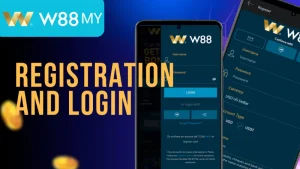Was “working from home” really just an excuse to run the dryer while pretending to be on mute? Now that feels like a nostalgic joke. Today’s remote work is a whole new ballpark—one that runs on next-level tech. And the MVP? Surprisingly, it’s monitoring software designed to boost productivity, not limit it. Let’s rewind to the moment I saw the proof, because the crystal-clear future of work is a lot closer than you think.
The Great Remote Work Reality Check
In March 2023, I woke up to the call every remote manager fears. Our biggest client flat-out wondered whether a scattered team could deliver the same excellence as a traditional office could. Ouch. When I hung up, the uncomfortable truth hovered over me: I couldn’t assure them.
I absolutely believed in my crew. No doubt. But “belief” doesn’t show up in metrics needed to save a six-figure contract from drifting away. I realized I needed insight—only then could I spot who needed a boost, who was smashing it, and what bottlenecks caused our train to slow. That’s when I figured out a new angle: today’s monitoring isn’t about checking up on people. It’s about shining a flashlight on the entire workflow.
Two weeks after rolling out our new monitoring tool, a story I didn’t see coming showed us a brighter path. In our Seattle office, Sarah was quietly crushing deadlines, always working early mornings and late nights when the world was quiet. Across the country, the “A-player” we all cheered out loud for was burning the same work hours—on memes and reels instead of briefs and decks.
What floored me, though, was Sarah’s reaction. Instead of rolling her eyes, she cheered. “Finally, proof my weird hours actually rock,” she texted as the graphs lit up her screen.
Beyond the Camera-Fearing Narrative
Most folks still think monitoring tools leash you like a guard dog, barking every minute you “onboard.” The truth is, we found a solution that acts more like a coach: the whistle blows when you slack and cheers when you crush personal bests.
Look at our creative crew. For ages, we fought over why billable time and inspired time never matched up. That changed when the dashboard laid out the truth: Big ideas pop in quick sprints, then the brain needs long, sunny buffering.
With that glimpse, our calendar plans flipped. We now carve out “deep work sprints” followed by wide gaps for rest and random genius. The result? Quieter Slack channels, happier clients, and a 40% bump in joy ratings, all because we stopped pretending an billed eight was our creative holy grail.
The Controlio app isn’t just a fancy way to clock hours; it dives deeper. It spots the little habits that drain time and nudges both team leaders and team members toward a smoother flow. Less guesswork, more smart moving.
When the Alert That Changed Our Minds Rang
Picture this: last year, the average remote breach drained companies a staggering $4.96 million. I mean, THAT number exists for a reason.
When a health tech client asked how we guard the digital vault, I felt the floor drop. Every day, sensitive patient files streamed over not-so-secure home Wi-Fi, smart-fridge hacked routers, the works. It hit me: we were balancing on a tightrope with no harness.
Off I ran, and we stitched data loss prevention (DLP) tools right into the tracking mix. Within weeks, the lights flickered. The very first month, we caught near-misses by the score—none of the teams were trying to breach the wall; they simply didn’t know where the wall was.
Take Marcus, who shared his screen during a pitch but was still flicking through another project. The app slammed on the brakes, flagged the breach, and we solved the slip BEFORE the meeting hit the record button. No panic, just good prevention.
Real-World Wins Across Different Industries
The beauty of modern monitoring lies in how it shapes itself around every kind of work style. Here are three stories that show just that.
- A Chicago law firm noticed that their paralegals nailed their best work before lunch. In the afternoon, they churned out the most clever research tactics—but by then, accuracy dipped. By shifting daily hours to line up with this natural flow, the firm cut document errors by 35%. It took little more than calendar nudges.
- In Austin, a software company spotted a pattern: their top coders thrived in 90-minute sprints followed by 20-minute resets. Instead of insisting on nine-to-five clocks, the leadership redesigned the space (virtual and physical) around these micro-cycles. By giving the freedom to flow, bugs got stomped faster and morale soared.
- Meanwhile, a Portland marketing agency learned that their designers and writers gleamed with fresh concepts not at desks but during informal strolls, snack breaks, and hallway pow-wows. They began to formally carve out “walking brainstorms” and treat these sessions as prime studio hours. Productivity followed the rise, but so did workplace energy.
The Trust Paradox That Actually Works
Here’s the twist: the more open we were about the data, the deeper trust grew. In a world where executives hoard numbers, giving everyone the same dashboard flipped suspicion into security. Teams didn’t feel surveilled; they felt coached. The result? People shared their own hurdles sooner, and we tackled them together.
When Jamie, one of our developers, was struggling through a tough divorce, our monitoring data ended up protecting her more than we ever intended. Instead of assuming her drop in output meant she was less committed, we spotted that she was keeping the same hours, just facing more interruptions and a level of stress that showed in the metrics.
The HR dashboard shared enough context that we could offer real, compassionate support instead of swinging the performance review hammer. Jamie told me later that knowing she was seen and supported—not judged—built a deeper loyalty to the company than any one-time bonus could achieve.
The Privacy Balance That Everyone Can Accept
Yes, privacy worries are very valid, and we take them seriously.
The rule is simple: we track work devices during work hours, and that’s it. No peeking at personal phones, no backdating overnight logs, and no listening in on private conversations.
We added “focus shields” that any employee can turn on during sensitive calls or brainstorming sessions. This hand signal stops data collection temporarily, sending a clear message: your bubble is respected while we still keep accountability in check.
Ongoing privacy audits keep our data collection limited to what we genuinely use, and everyone can glance at their personal dashboard to see what’s visible at any second. This isn’t Big Brother peering over your shoulder; it’s a shared toolkit keeping performance transparent while keeping personal life private.
Implementation Lessons That Stick
Rolling out monitoring software isn’t just a tech project—it’s a change management exercise that requires finesse.
- Lead with the why rather than the what. Before we showed anyone the dashboard or how cool the features looked, we hosted team meetings where we talked only about goals: better client service, fairer performance reviews, and ironclad data security.
- Invite employees into the process. Our pilot team helped pick the monitoring tool and weighed in on privacy settings and dashboard layouts. When folks steer the wheel, they’re far more likely to own the car.
- Frame it as empowerment, not enforcement. When we first collected reports, we used them in coaching sessions, never disciplinary meetings. Our mission was to show the team the software was a growth tool, not a scoring system.
The Competitive Advantage Most Companies Miss
What most organizations overlook is that monitoring data isn’t simply about managing the crew that’s already aboard—it’s about planning, recruiting, and training the all-stars of the future.
That data now lets us pinpoint the traits of our top performers, fine-tune our hiring process with real productivity evidence, and build training that fills actual skill gaps rather than the ones we guess exist. This insight is reshaping our entire talent strategy.
When we interview applicants these days, we show them exactly what winning in the job feels like, and we support that picture with hard numbers from our top performers. Fresh hires walk in already knowing what success looks like and the exact criteria they’ll meet during the year.
Looking Ahead: Tomorrow Is Now
The tracking systems we’re seeing evolve aren’t just keeping score; they’re becoming smart, real-time coaching platforms.
The Controlio app I shared earlier has leveled up to anticipate employee burnout, provide time nudges for the ideal refresher breaks, and even propose learning goals that mesh with the daily work style.
We’re also seeing AI insights reveal blockages in teamwork ahead of the looming deadline, recommend the most productive team mix for the work ahead, and alert us to probable security threats as they arise.
The Big Picture: Make Openness the Advantage
Modern tracking isn’t surveillance; it’s the fair playing field every employee deserves, with success tied only to what you do—not to politics or guesswork.
When every person in the organization can see the same, objective picture of performance, we gain fairness, razor-sharp efficiency, and measurable success. Teams that commit to this openness aren’t just keeping up with remote work; they’re setting the pace that others are beginning to follow.
Do you want to be someday fighting for shiny new tools your rival implemented for free years ago? The real choice you’re facing is what you’ll measure, not if you measure, and what you choose to measure today will shape tomorrow’s edge.
When your crew leans on straightforward, up-to-date metrics, they become confident, not nervous desk robots waiting to be told what to do. Share custom dashboards and set up alerts for what really matters. The project sprint is barreling ahead, and Sarah’s metrics alert you before her weeks-overdue file even appears on the shared drive. The chatter is “Oh, so we’re backing you up” instead of “Why are the numbers so bad?” That’s the kind of atmosphere you cultivate.
To make this mental shift stick, equip all roles—junior intern and VP of genius—with auto access to self-serve reports that let them find, discuss, and act on their success patterns. A crystal-clear tableau of their wins, tweakable at will, sparks growth that feels like a reward rather than a chore. The culture you want isn’t the one imposed from the corner office globe; it’s the one animated at every desk from the data that flows past on that desk.
Try Employer Monitoring Software
To truly harness the power of smart oversight, consider integrating employer monitoring software like the Controlio app into your workflow. It’s not about watching every move but about providing the insights that drive smarter decisions, better collaboration, and a stronger team dynamic.



